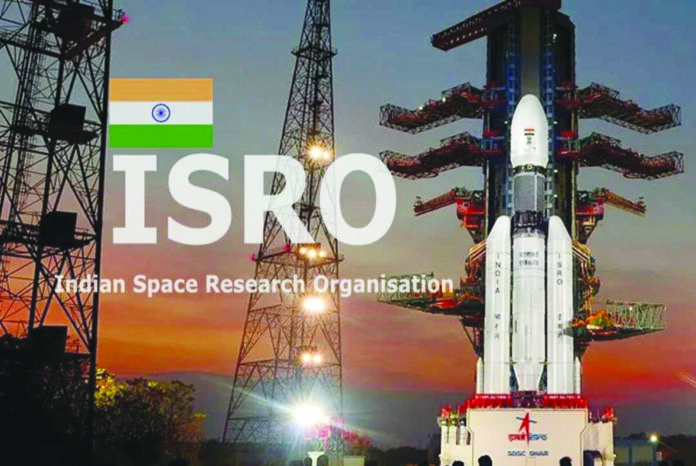The Indian Space Research Organisation (ISRO) is the Indian space agency founded in 1969. Its main mission is to advance space technology, space programmes, satellite systems, television broadcasting, disaster warning and the Indian Remote Sensing (IRS) for various national tasks. ISRO’s headquarters is in Bengaluru, headed by the Chief Executive (Chairman), also chairman of the Indian Government’s space mission.
ISRO has launched numerous space systems since its establishment. It launched its first Satellite, Radar Imaging Satellite, a geosynchronous satellite called GSAT 1988. It developed its second Satellite in 2012, named RISAT-1. Some other satellites, like Altika and Argos, were launched by ISRO in 2013. It was an endeavour to put a satellite into geostationary orbit, and a Polar Satellite Launch Vehicle (PSLV) was launched. This organization launched LVM3, which is the heavy-lift version of GSLV.
Some earth Observation satellites and missions to the moon were named Chandrayaan-1 and 2, launched in 2008 and 2019 by ISRO. The Mars Orbiter Mission of 2013 was launched to put astronauts into orbit. This one is the future project of ISRO, which will be completed under the mission Gaganyaan Spacecraft in 2024.
There are so many missions of ISRO that have taken place; However, earlier in 2013, the first Interplanetary mission to Mars, known as Mars Orbiter or Mangalyaan, was achieved by ISRO successfully.
Currently, India’s Chandrayaan-3 mission was completed by two vehicles named Pragyan and Vikram, which landed in the southern polar region of the moon. This mission has made India the first country to reach this part of the lunar surface and the fourth country in the world to land on the moon. While landing on the moon, scientists have noted that the distance from the Earth to the moon is about 384,400 km (238,855 miles).
However, the Indian probes landed successfully and ISRO stated they had landed about 370 miles from the south pole and at about 70 degrees south latitude. The landing on the moon was viewed by 7.5 million people on YouTube, and all news channels in India telecast the whole event live to attract more people to this milestone in history made by the Indian Government. A report has asked S. Somanath, the current director of the ISRO, how much cost was spent on this project. He replied that he would never disclose this secret; however, its cost equals Chandrayaan-2, which was reported as $46 million when launched in 2019.
It is to be assumed that giving a chance to a neighbouring enemy will ultimately break your state into pieces. The government of Pakistan should take the next step to activate SUPARCO again. Failure to do this will bring catastrophic changes in the region.
The World Space Program, like NASA and other Space Technology counterparts, warmly congratulated the ISRO team for achieving this milestone. Bill Nelson, a veteran administrator of NASA, congratulated ISRO for the successful soft landing on the moon. He also articulated that NASA is glad to be the partner on this mission. Some experts believe that NASA sponsored it when Modi visited the USA the last time and decided to have a co-partnership in Space technology. The Tweet of Bil Nelson shows that NASA has fully supported the ISRO in its Deep Space Network of Radio antennae for communication with India’s Chandrayaan-3. It shows that India could only reach the moon with NASA’s support.
The ISRO faces the same challenges as the Suparco (Space and Upper Atmosphere Research Commission) in Pakistan has faced, despite ISRO having shown dedication by launching Chandrayaan-3 and still moving to pursue its goals. They plan to set some strategies to overcome its weaknesses, like resource allocation, international collaborations, and technical capabilities.
Contrary to ISRO in this region, Pakistan started its Space Programme in 1960, named Space and Upper Atmosphere Research Commission (SUPARCO). It was marked as an official project of the government of Pakistan to improve research in space technology, satellite development, and related fields.
Pakistan made its first endeavour in space technology by launching Rahbar-1, which was launched on 7 December 1961, using a U. Scout rocket. Several other projects like suborbital flights and sounding rocket, the Launch of Badr Satellites on July 16, 1990, Remote Sensing and Earth Observation (PRSS-1) which was launched in 2018, are few worthy projects of SUPARCO, a Pakistani-based space centre, still the country is endeavouring to make a significant contribution in the space programme, but political turmoil, a crumbling economy, and depreciating currency have diverted Pakistan to a state of chaos.
Some external and internal factors have badly affected the SUPARCO space programme. These are limited funding by the government, lack of political and public support, technological challenges, brain-drain, limited international collaboration, technical and operational challenges and the changing priorities of stakeholders. The political turmoil and internal security dynamics are a few hindrances to SUPARCO. The SUPARCO can make significant discoveries if the government of Pakistan and the people who are part of the brain drain sit together and make a roadmap for SUPARCO to become progressive.
It is to be assumed that giving a chance to a neighbouring enemy will ultimately break your state into pieces. The government of Pakistan should take the next step to activate SUPARCO again. Failure to do this will bring catastrophic changes in the region.




















